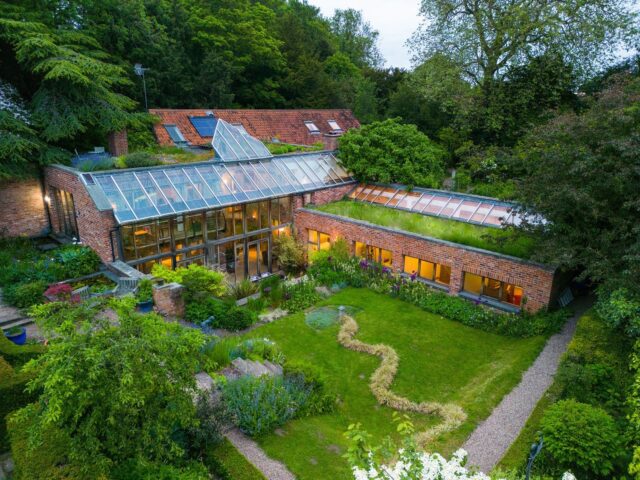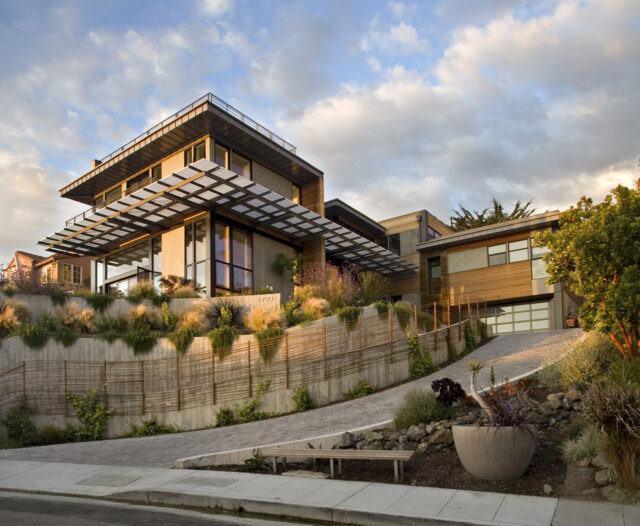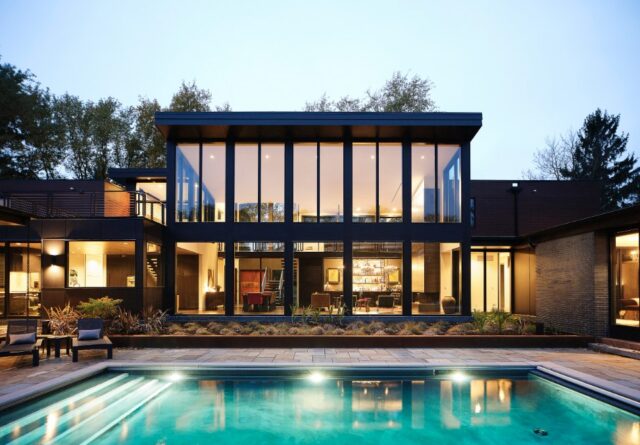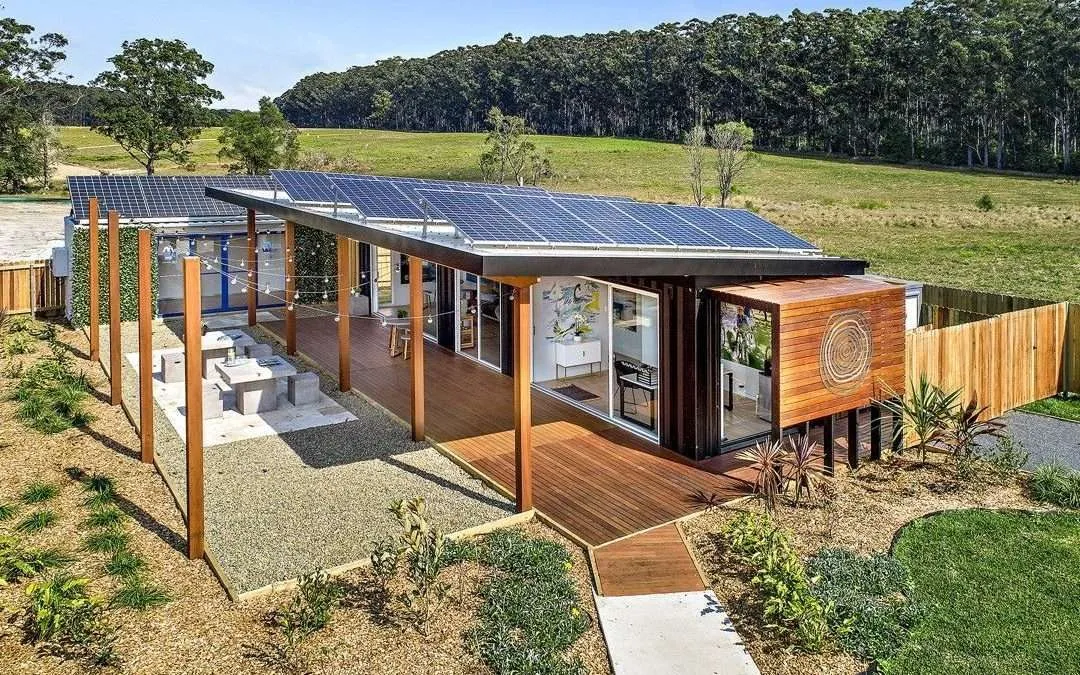
In today’s world, the concept of luxury is evolving. It’s no longer just about opulence and grandeur, but also about integrating sustainable practices that ensure a healthier planet.
High-end homes, traditionally symbols of wealth and excess, are now becoming pioneers in the green movement.
This shift not only reflects a growing environmental consciousness but also a recognition that sustainability can enhance the quality of life in significant ways.
The Foundation of Sustainable Luxury
Sustainable luxury is rooted in the belief that elegance and environmental responsibility can coexist harmoniously. This concept starts with the materials used in construction. For instance, sourcing locally available materials reduces the carbon footprint associated with transportation.
Recycled and reclaimed materials, such as wood from old barns or metal from demolished buildings, offer unique aesthetic qualities while minimizing environmental impact.
The key lies in merging luxury with eco-friendly practices, a trend that companies like Meyer Blue are at the forefront of promoting.
High-end homes often feature expansive designs and premium finishes. To align these with sustainable practices, incorporating materials like bamboo, which grows rapidly and replenishes quickly, or using stone and clay that have minimal environmental impacts, can make a substantial difference.
Moreover, these materials add a distinct touch of natural beauty and timelessness to the homes, making them both luxurious and eco-friendly.

Energy Efficiency ─ Powering Luxury Sustainably
Energy efficiency is a cornerstone of sustainable high-end homes. Modern luxury homes can be equipped with state-of-the-art energy management systems that optimize energy use. Installing solar panels, for example, can significantly reduce reliance on non-renewable energy sources.
These panels can be designed to blend seamlessly with the home’s architecture, maintaining the aesthetic appeal while serving a crucial function.
Another aspect of energy efficiency is the use of smart home technology. Automated systems can control lighting, heating, and cooling, ensuring that energy is used only when necessary.
For instance, smart thermostats can learn the homeowner’s schedule and adjust the temperature accordingly, reducing energy waste. High-efficiency appliances, from refrigerators to washing machines, also play a significant role in lowering energy consumption, providing both environmental benefits and cost savings over time.
Water Conservation ─ A Precious Resource
Water conservation is another critical element of sustainable living in high-end homes. Advanced plumbing systems can reduce water usage without compromising on luxury.
Low-flow fixtures, for example, use less water while maintaining high performance. Rainwater harvesting systems can collect and store rainwater for irrigation and other non-potable uses, reducing the demand on municipal water supplies.
Landscaping, an integral part of high-end homes, can be designed to be water-efficient. Native plants and xeriscaping techniques require less water and maintenance, preserving the natural ecosystem and reducing water usage. Additionally, greywater systems, which recycle water from sinks and showers for use in irrigation, can significantly cut down on fresh water consumption, making the entire home more sustainable.

Indoor Air Quality ─ Health and Comfort
Indoor air quality is crucial for both health and comfort in luxury homes. Sustainable practices in this area focus on using non-toxic, natural materials that do not emit harmful chemicals. Paints, finishes, and building materials with low or zero volatile organic compounds (VOCs) improve indoor air quality, making the living environment healthier.
Ventilation systems that bring in fresh air and expel stale air without losing energy are also essential. Heat recovery ventilators (HRVs) and energy recovery ventilators (ERVs) are advanced systems that provide this functionality, ensuring that the indoor environment remains comfortable and healthy without excessive energy use.
Moreover, incorporating indoor plants can naturally enhance air quality while adding a touch of greenery and tranquility to the living spaces.
Smart Design ─ Maximizing Natural Light
Smart design is another pivotal aspect of sustainable high-end homes. Maximizing natural light reduces the need for artificial lighting and creates a warm, inviting atmosphere.
Large windows, skylights, and open floor plans can enhance the flow of natural light throughout the home. Not only does this reduce energy consumption, but it also improves the overall ambiance and well-being of the inhabitants.
Incorporating passive solar design principles, such as positioning the home to take advantage of the sun’s path, can further enhance energy efficiency. South-facing windows, for instance, allow for maximum sunlight during winter, reducing heating needs, while overhangs or shading devices can prevent overheating in the summer.
These design strategies blend functionality with aesthetics, ensuring that luxury homes are both beautiful and sustainable.

Sustainable Landscaping ─ Beauty and Biodiversity
Sustainable landscaping goes beyond water conservation. It involves creating outdoor spaces that support local biodiversity and minimize environmental impact. Using native plants that are well adapted to the local climate reduces the need for chemical fertilizers and pesticides, promoting a healthier ecosystem.
Renewable Energy ─ Beyond Solar
While solar energy is a popular choice, high-end homes can explore other renewable energy sources as well. Geothermal energy, for instance, uses the stable temperature of the earth to heat and cool the home efficiently. Wind turbines, though more common in rural settings, can also be adapted for use in large estates where space allows.
These renewable energy systems can be integrated into the home’s design to maintain its luxurious appearance.
For example, solar panels can be incorporated into the roof design, and wind turbines can be positioned in a way that complements the landscape. These systems not only reduce the home’s carbon footprint but also often pay for themselves over time through energy savings.

Sustainable Furnishings ─ Eco-Friendly Interiors
The sustainability of a high-end home extends to its interiors. Choosing furniture and decor made from sustainable materials and practices can significantly reduce the environmental impact.
This includes using recycled materials, such as reclaimed wood or metal, and selecting pieces from manufacturers committed to sustainable practices.
Conclusion ─ A New Standard of Luxury
The integration of sustainable practices in high-end homes represents a new standard of luxury that values both opulence and environmental stewardship.
By focusing on sustainable materials, energy efficiency, water conservation, and smart design, high-end homes can set an example for responsible living.









